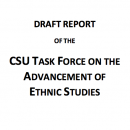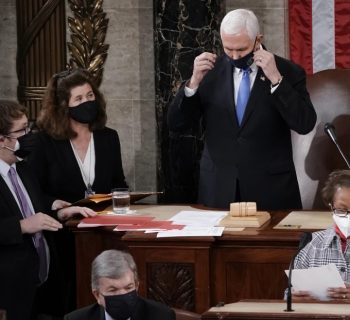Published on 06-01-2015 11:51 AM
Breaking News: Fifth Circuit Refuses to Stay the Injunction Barring Implementation of President Obama's Expanded Deferred Action Program
by Kevin R. Johnson
The CrImmigration blog has posted the U.S. Court of Appeals for the Fifth Circuit decision in Texas v. United States denying the Obama administration's request for a stay of the district court's preliminary injunction barring implementation of the expanded deferred action program announced in November 2014. Judge Jerry Smith wrote the opinion for the court and was joined by Judge Jennifer Elrod. Judge Stephen Higginson, an Obama appointee and former law professor, dissented.
The majority summarized its ruling as follows: "[b]ecause the government is unlikely to succeed on the merits of its appeal of the injunction, we deny the motion for stay and the request to narrow the scope of the injunction." It found that the U.S. government had not made a strong showing that it is likely to succeed on the merits of its claim that the states lack standing. The court concluded that the costs of issuing driver's license by the state of Texas under the expanded deferred action program was likely sufficient to confer standing on Texas. The court further found that the U.S. government failed to establish a strong likelihood of success on plaintiffs' claim under the Administrative Procedure Act. Last but not least, the court rejected the U.S. government's argument that the injunction be limited to the state of Texas:
"The government maintains that the nationwide scope of the injunction is an abuse of discretion, so it asks that the injunction be confined to Texas or the plaintiff states. But partial implementation of DAPA would undermine the constitutional imperative of `a uniform Rule of Naturalization' and Congress’s instruction that `the immigration laws of the United States should be enforced vigorously and uniformly.' A patchwork system would `detract[] from the ‘integrated scheme of regulation’ created by Congress.' Further, there is a substantial likelihood that a partial injunction would be ineffective because DAPA beneficiaries would be free to move between states." (footnotes omitted).
Judge Higginson dissented, summarizing his views as follows:
"I would hold that the underlying issue presented to us—the order in which non-citizens without documentation must be removed from the United States—must be decided, presently is being decided, and always has been decided, by the federal political branches. . . . On the expedience of immigration measures, sensible things can be said on all sides, mindful that our country is an immigrant society itself. The political nature of this dispute is clear from the names on the briefs: hundreds of mayors, police chiefs, sheriffs, attorneys general, governors, and state legislators—not to mention 185 members of Congress, 15 states and the District of Columbia on the one hand, and 113 members of Congress and 26 states on the other. I would not affirm intervention and judicial fiat ordering what Congress has never mandated." (citation and footnote omitted) (emphasis added).
I agree with Lyle Denniston on SCOTUSBlog that this case is likely to end up in the Supreme Court.
UPDATE (May 29): Yesterday, the Obama administration announced that it would not seek Supreme Court review of the request for a stay of the preliminary injunction putting the DAPA program on hold. The administration will focus on defending the program on the merits and lifting the preliminary injunction in the Fifth Circuit.
This post originally appeared on Immigration Prof Blog. Reprinted with permission.
About The Author
Kevin R. Johnson is Dean, Mabie-Apallas Professor of Public Interest Law, and Professor of Chicana/o Studies. He joined the UC Davis law faculty in 1989 and was named Associate Dean for Academic Affairs in 1998. Johnson became Dean in 2008. He has taught a wide array of classes, including immigration law, civil procedure, complex litigation, Latinos and Latinas and the law, and Critical Race Theory. In 1993, he was the recipient of the law school's Distinguished Teaching Award.
FIFTH CIRCUIT PRECEDENT ON PREEMPTION CAN PROVIDE OBAMA WITH PATH TO VICTORY IN TEXAS v. UNITED STATES.
Published on 06-01-2015 12:34 PM
by Cyrus D. Mehta, ILW.com
After a split Fifth Circuit panel declined to lift Judge Hanen's preliminary injunction in Texas v. United States blocking President Obama's two executive actions that could defer the deportations of an estimated 4.4 million people, the score was 2 in favor of Texas and 0 for President Obama. One of the memorable quotes in the Rocky movie about boxing is apt here, "[I]t ain't how hard you hit; it's about how hard you can get hit, and keep moving forward."
Although President Obama has been hit hard, his legal team has to keep moving forward and there is plenty to look forward to that can ultimately win the day for the 4.4 million who will benefit from deferred action. Although there has been substantial analysis regarding the flaws in the latest decision, scant attention has been paid to a 2013 decision of the Fifth Circuit that held that a local ordinance penalizing landlords and occupants for not being lawfully present in the United States was preempted under federal immigration law. This decision may provide a narrow path to victory for President Obama.
In Villas at Parkside Partners v. Farmers Branch, 726 F.3d 524 (5th Cir. 2013), the Fifth Circuit struck down a Farmers Branch, TX, ordinance on preemption grounds because it conflicted with federal law regarding the ability of aliens not lawfully present in the United States to remain in the US. The Fifth Circuit also noted that the federal government’s ability to exercise discretion relating to removal of non-citizens is a key reason for a state or local regulation of immigration being preempted under the Supremacy Clause of the US Constitution:
Whereas the Supreme Court has made clear that there are "significant complexities involved in [making] . . . the determination whether a person is removable," and the decision is "entrusted to the discretion of the Federal Government," Arizona, 132 S. Ct. at 2506; see also Plyler, 457 U.S. at 236 (Blackmun, J., concurring) ("[T]he structure of the immigration statutes makes it impossible for the State to determine which aliens are entitled to residence, and which eventually will be deported."), the Ordinance allows state courts to assess the legality of a non-citizen's presence absent a "preclusive" federal determination, opening the door to conflicting state and federal rulings on the question.
Texas v. United States, on first brush, is not a preemption case as it does not involve a state law regulating immigration that conflicts with federal law. Plaintiff states challenged President Obama’s executive actions, mainly on grounds that the President did not issue a rule prior to implementing deferred action for parents who have citizen or permanent resident children in the US (DAPA) or expanded deferred action for childhood arrivals (DACA). Still, the Fifth Circuit’s panel refusing to stay the preliminary injunction of Judge Hanen does not bode too well for federal preemption of immigration law and policy, which has been upheld not only by the Fifth Circuit inFarmers Branch, but also by the Supreme Court in Arizona v. United States, 132 S.Ct. 2492, 2499 (2012), which articulated:
A principal feature of the removal system is the broad discretion exercised by immigration officials…... Federal officials, as an initial matter, must decide whether it makes sense to pursue removal at all. If removal proceedings commence, aliens may seek asylum and other discretionary relief allowing them to remain in the country or at least to leave without formal removal….
Discretion in the enforcement of immigration law embraces immediate human concerns. Unauthorized workers trying to support their families, for example, likely pose less danger than alien smugglers or aliens who commit a serious crime. The equities of an individual case may turn on many factors, including whether the alien has children born in the United States, long ties to the community, or a record of distinguished military service. Some discretionary decisions involve policy choices that bear on this Nation’s international relations. Returning an alien to his own country may be deemed inappropriate even where he has committed a removable offense or fails to meet the criteria for admission. The foreign state maybe mired in civil war, complicit in political persecution, or enduring conditions that create a real risk that the alien or his family will be harmed upon return. The dynamic nature of relations with other countries requires the Executive Branch to ensure that enforcement policies are consistent with this Nation’s foreign policy with respect to these and other realities.
When the actual merits of Judge Hanen’s injunction are considered by another panel of judges in the Fifth Circuit, they will hopefully take notice of Farmer's Branch that was decided en banc, which upheld the federal government's ability to exercise discretion in the removal of aliens under the preemption doctrine. Interestingly, Judges Smith and Elrod, who decided against President Obama in the Fifth Circuit, were also among the dissenting judges in the Farmers Branch case.
The key issue in Texas v. United States is whether states should be even permitted to sue the federal government on immigration enforcement policy. If President Obama loses in the Fifth Circuit on the actual appeal, and the Supreme Court upholds it, then this would be an open invitation for any cantankerous state politician to bring a law suit against the federal government over an immigration policy that he or she dislikes. The ability of a state to harass the federal government could be endless. For instance, the federal government can invoke its authority to parole aliens into the United States under INA 212(d)(5), and could bring in a large group of people into the US for humanitarian reasons, such as victims of atrocities by ISIS in Iraq and Syria. A state opposed to the paroling of these aliens can potentially sue the federal government if it can manufacture some harm that would befall it, like Texas did, that it would be costly for the state to issue drivers licenses to them. Similarly, a state could sue the federal government for granting deferred action to victims of domestic violence or crime victims or widows and widowers of US citizens, like the federal government has done in the past. These sorts of challenges from states would undermine the long established doctrine that immigration policy is within the purview of the federal government and Congress. Another concern for upholding preemption of federal immigration law from interference by states is the concern about the relationship between immigration and foreign affairs. See Toll v. Moreno, 458 U.S. 1 (1982); Hines v. Davidowitz, 312 U.S. 52 (1941). If a state were allowed to sue each time the federal government issued a policy and blocked it, this would upset the long acknowledged preemption doctrine relating to immigration. If there is a disagreement in how the Executive Branch implements immigration policy, it is for Congress to intervene by changing the law rather than for states like Texas to file a law suit.
Judge Higginson’s dissenting opinion (who also wrote the majority opinion in Farmers Branch) in the Fifth Circuit’s decision refusing to lift the stay correctly opined that President Obama’s executive actions are non-justiciable as they are internal executive enforcement guidelines. The dissenting opinion appropriately relied on the Supreme Court decision in Heckler v. Chaney, 470 U.S. 821 (1985), which held “that an agency’s decision not to prosecute or enforce, whether through civil or criminal process, is a decision generally committed to an agencies absolute discretion.” Whether executive enforcement guidelines provide deferred action to millions rather than thousands or hundreds should not make them any more or less amenable to a legal challenge by a state. So long as the President does not grant legal status, which he cannot do under the INA (and both Judge Hanen and the majority in the Fifth Circuit confused legal status with lawful presence), it should not make a difference under Heckler v. Chaneywhether deferred action is granted to thousands of spouses of military personnel or to millions of parents of citizen and permanent resident children. Charles Kuck andothers have forcefully proposed that President Obama should publish a rule in the Federal Register, and this would weaken plaintiffs’ chief claim that the President violated the Administrative Procedure Act by not proposing a rule for public notice and comment when implementing DAPA and DACA. While this is an intriguing idea, it would also be a cop out. Every new enforcement decision would have to go through the notice and comment procedure under the APA out of fear of inviting more law suits from states, and this would again undermine the preemption doctrine relating to immigration.
Indeed, one of the concurring opinions in Farmers Branch acknowledged that the largely federal discretionary immigration enforcement system, including the grant of deferred action, would be upset if a state regulation conflicted with it, and relied on Arizona v. USA by opining: “The Court held that the statute stood as an impermissible obstacle to the design and purposes of the largely discretionary immigration enforcement system Congress created because it could result in “unnecessary harassment of some aliens (for instance, a veteran, college student, or someone assisting with a criminal investigation) whom federal officials determine should not be removed” and ultimately “would allow the State to achieve its own immigration policy.” [citation omitted]. Because such state-to-state variance “is not the system Congress created,” the Court held that the Arizona statute “violates the principle that the removal process is entrusted to the discretion of the Federal Government.””
There are many arguments that may ultimately carry the day for the Obama administration and its ability to bring relief to millions who are a low enforcement priority. InCrane v. Johnson, the federal government was victorious in a law suit against the previous 2012 DACA program as the Fifth Circuit held that Mississippi lacked standing since its claim to injury was speculative. Texas, however, has been able to manufacture a more cogent harm regarding the burdens that would be caused in the issuance of new driver licenses. Regardless of the merits of a state’s standing claim, standing would be moot if the claim is non- justiciable as Judge Higginson found, and Farmers Branch should provide the basis for this on the ground that a state cannot upset the preemption doctrine on immigration. It is no secret that Texas v. United States is a political fight as the plaintiff states are Republican, and the judges that have ruled against Obama have been appointed by Republican Presidents. It is also true that the majority of judges in the Fifth Circuit are Republican appointees, but Farmers Branch was also decided en banc in the Fifth Circuit, and the panel that considers the appeal will be bound by its own precedent.
This post originally appeared on The Insightful Immigration Blog. Reprinted with permission.







